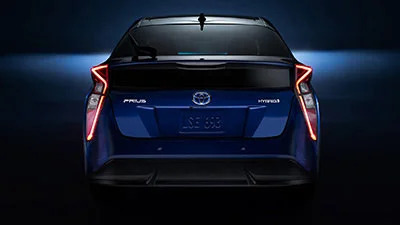According to estimates from the Environmental Protection Agency (EPA), the 2016 Prius gets 54 mpg in the city and 50 mpg on the highway, making it one of the most fuel-efficient cars in the world. This spectacular fuel economy didn’t happen by accident. Toyota spent years developing technology that would improve the popular hybrid vehicle’s efficiency.
If you’re interested in buying a car with remarkable hybrid technology, you’ll want to know these four reasons the Toyota Prius offers the best fuel economy.
An Aerodynamic Shape That Reduces Drag
When you compare the 2015 Prius to the 2016 version, you’ll immediately notice that Toyota changed the exterior slightly. While the company probably wanted to maintain the Prius’s iconic shape, it also wanted to make some tweaks that would reduce drag. Those subtle changes help improve fuel efficiency by letting the car slip easily through the air. The design works so well that the 2016 Prius gets about two miles per gallon more than the 2015 model.
What you may not notice is that the 2016 model is about 2.5 cm (about an inch) lower than the 2015 Prius. The company managed to do this thanks to its Toyota New Global Architecture technology. The result is a lower center of gravity that improves handling while also lowering the car’s drag coefficient.
A Lithium Ion Battery Lowers the Weight
2016 is the first time that Toyota decided to use a lithium ion battery instead of a nickel metal hydride battery. This was a smart choice since lithium ion batteries are smaller and weigh less. By lowering the weight, Toyota made it possible for the Prius to drive more miles without using more power.
Lithium ion batteries cost a little more than nickel metal hydride designs, but the extra expense is worth it for drivers considered about saving money at the pump.
A More Rigid Body Further Reduces Weight
Toyota made major revisions to the Prius’s electric motor, transaxle, and other crucial components to lower the weight even more. New welding techniques made it possible to give the new Prius a rigid body that some estimate is 60 percent better than the 2015 version.
A Tweaked Powertrain Improves Thermal Efficiency
As the parts in a car interact, they create friction. During the process, that friction turns into heat, which then becomes lost energy the vehicle can’t use. Toyota made a lot of tweaks to the Prius’s powertrain over the last year and managed to lower the amount of friction (and, therefore, the amount of energy lost through heat).
All car manufacturers have made significant strides in thermal engineering technology over the last few decades. It’s one of the reasons that today’s cars tend to get better mileage than their older cousins. Toyota, however, has really pushed this technology to a new level.
The 2016 Toyota Prius proves that car manufacturers can build more efficient vehicles when they invest in new technologies. With some luck, Toyota’s advances will convince other companies to take fuel efficiency more seriously in the coming years.






